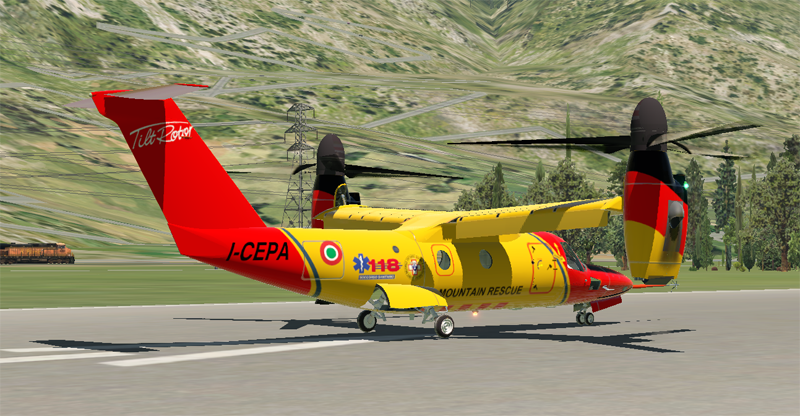The
AW609 answers to the needs of an aircraft with the speed, range and altitude of
a fixed-wing turboprop aircraft together with the vertical versatility of a
helicopter during take-off and landing.
This revolutionary combination, as well as the
comfort of a pressurized cabin in which you can fly over the weather, makes the
AW609 a real asset.
In order to transform a vertical flight helicopter into a plane with a
horizontal flight, we use the tiltrotor, a real technical feat.
The
AW609 seems simple in concept, but complex in its realisation.
Its pairs of three-bladed, 26-foot in diameter “prop-rotors,” coupled to their
1,930 shp Pratt & Whitney PT6C-67A turboshaft engines, must lift its
16,800-lb bulk into full vertical position.
They must then be able to rotate forward and moves the 44-foot-long,
33-foot-wide, 15-foot-tall airframe at forward speeds of 275 KTAS and altitudes
of 25,000 feet MSL.
To accomplish this, the engines must simultaneously rotate back and forth
between 95 degrees (straight up, plus another 5 degrees aft), and zero degrees
(straight forward).
The engines must also be able to turn both
rotor systems at any tilt angle as a whole, or independently.
To
make the units tilt as a matched set, the engineers employ one tilt-axis gearbox
on each engine nacelle.
The 609’s rotor mechanism can best be described as a main rotor head that can
rotate.
The pedals and toe brakes look normal, and control pivoting about the yaw axis.
But they are not connected to a tail rotor, and there is no rudder. In a hover,
pedal inputs change the pitch on the rotors cyclically, causing one or the
other set to drive the aircraft’s nose around its yaw axis.

Article
Micro Simulateur
To
buy it
https://sellfy.com/pizzagalli.ch/p/7lades/
Home
contact:
fpizzagalli@net2000.ch
These documents are the property of Pizzagalli.ch, any reproduction, use for profit and commercial purposes is prohibited without the consent of Pizzagalli.ch.
|